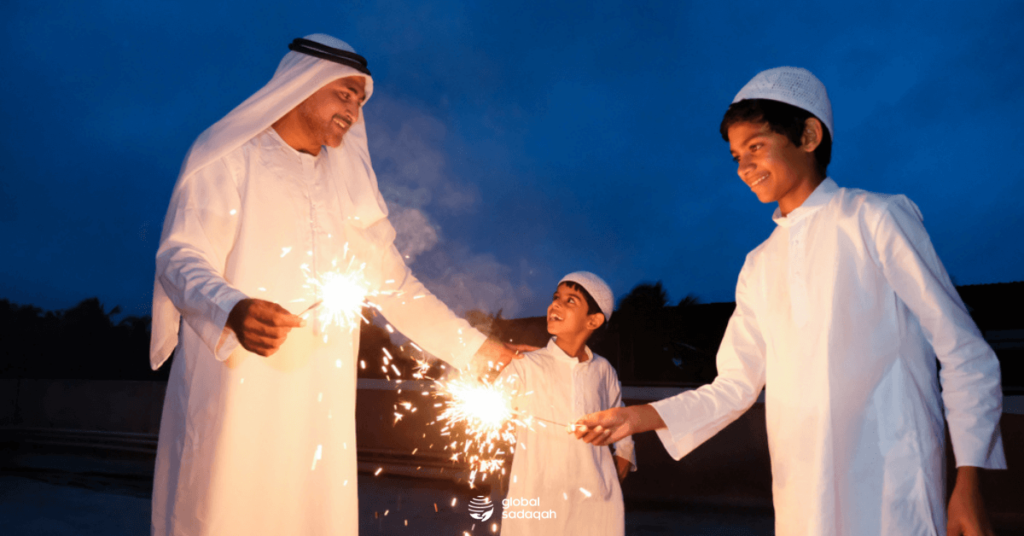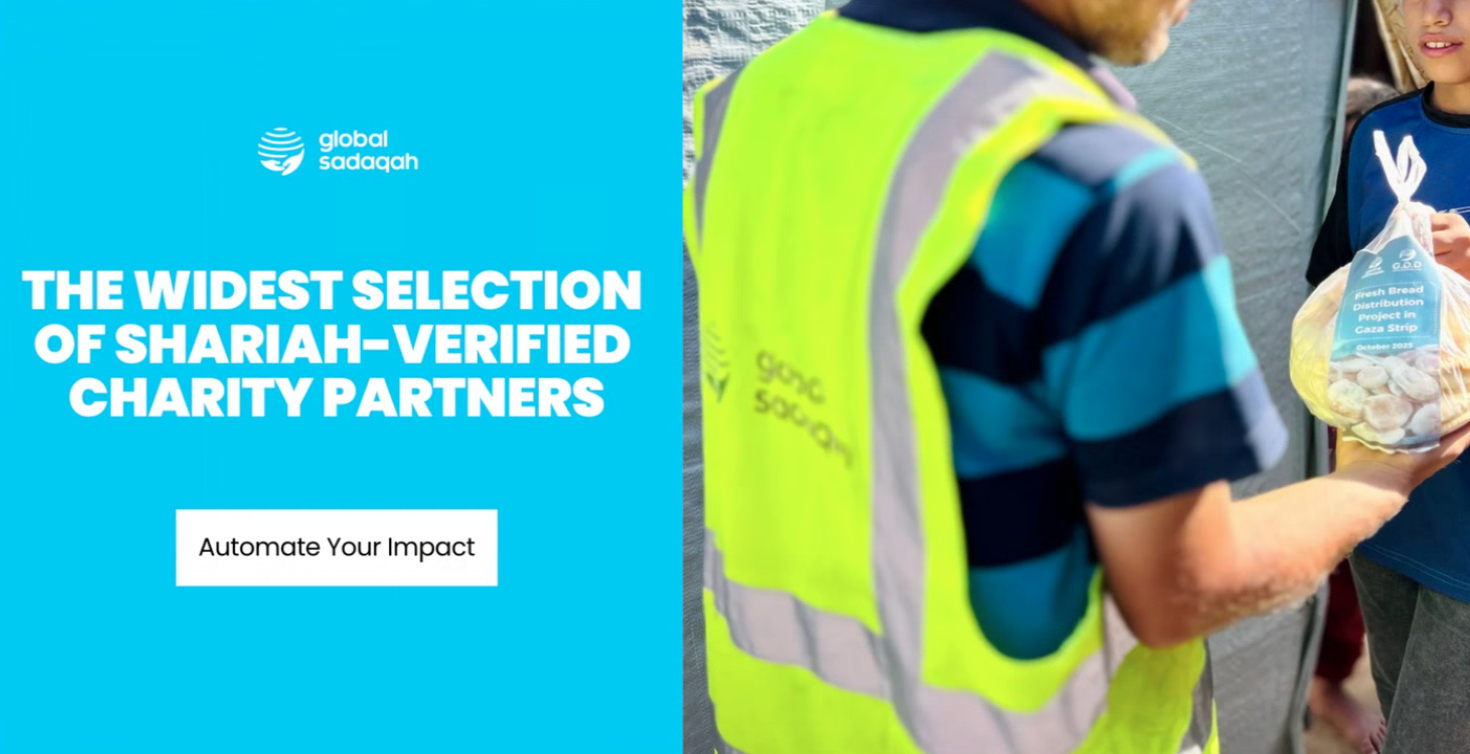Eid al-Fitr marks the end of Ramadan, a month of fasting for Muslims. Throughout Ramadan, Muslims abstain from eating and drinking from sunrise to sunset and subdue their worldly desires, to seek the pleasure of Allah. It is an act of worship that takes a lot of self-control and dedication to bring oneself spiritually closer to Allah, the Creator of the world.
Related: Ramadan: The Month Of Mercy
Muslims observe Eid al-Fitr to celebrate the victory of completing a month of abstinence. It’s a time where family and loved ones get together to enjoy the joyous occasion.
However, this year’s Eid celebration would be different, much like last year amid the gathering restrictions and round-the-clock lockdown measures to curb the spread of the pandemic.
If you’ve ever wondered what a typical Eid morning would look like, here’s how.
Performing sunnah acts during Eid
Muslims begin the day by taking a bath (ghusl) to ensure they are in the state of purity. As Muslims, cleanliness is a fundamental part of the religion. They would apply perfumes and dress up in their finest clothes, or don new clothes they bought especially for Eid.
Fasting on the first day of Eid is forbidden in Islam as that day signifies the end of the fasting month.
Following the Sunnah of the Prophet, Muslims would eat in the morning before offering Eid prayers to gain significant rewards.
Eid prayer
The Eid prayer is a highly recommended prayer for Muslims to perform. According to scholars, it’s considered as one of the most highly regarded Sunnah prayers as the Prophet never missed performing it. It’s ideally performed in a congregation but Muslims can also do it individually at home.
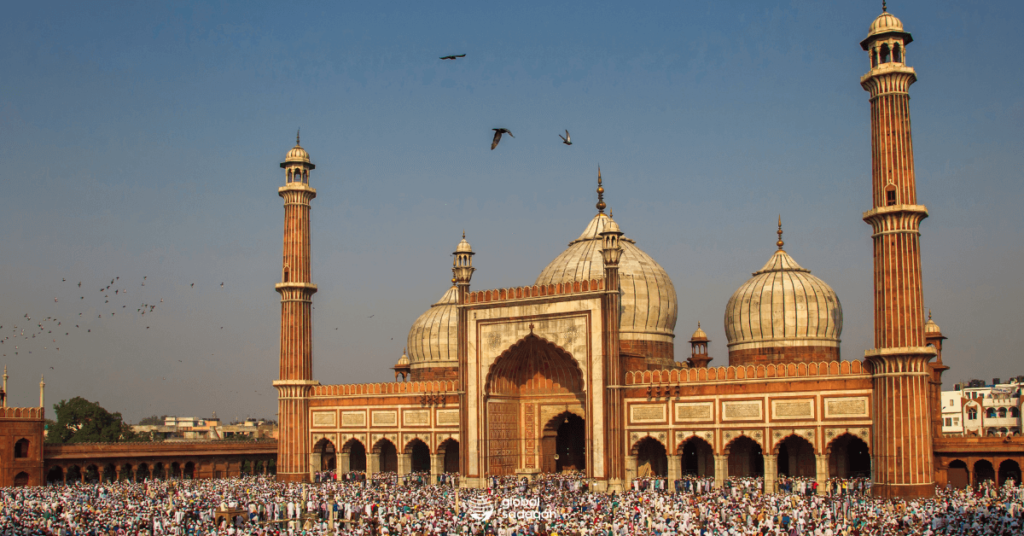
There is no specific time set for the Eid prayer but the time frame is from when the sun has completely risen until before the time for Zuhr prayer.
Besides these common religious practices, every country has its own unique Eid traditions too. Let’s take a look at how Muslims in these five countries celebrate it.
Unique Eid traditions from around the world
Malaysia
Muslims in Malaysia celebrate Eid, or more commonly referred to as ‘Hari Raya’ by heading back to their hometowns, or ‘balik kampung’ in the last few days of Ramadan. Their houses would be decorated with colourful lights to enliven the spirit of Shawal, the month of Eid.
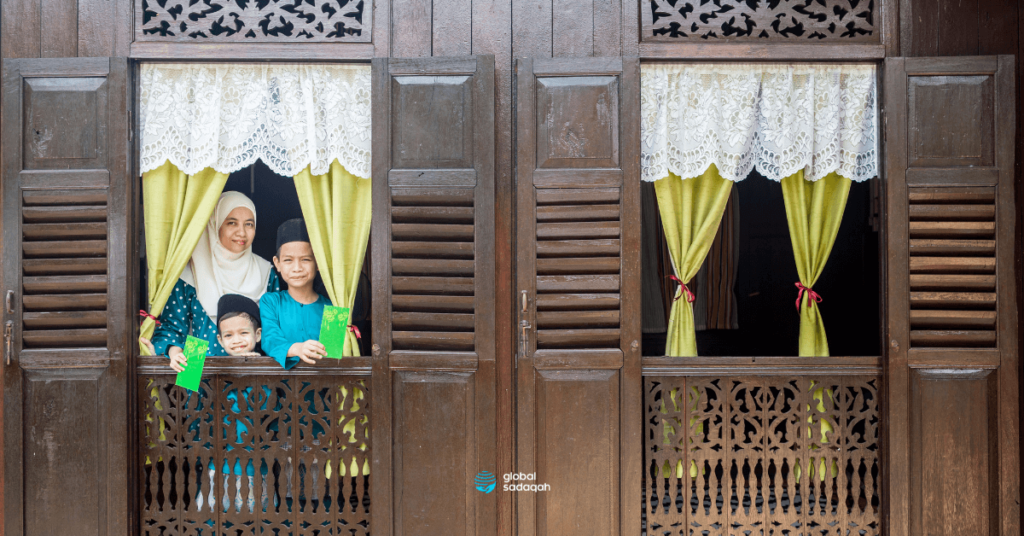
The windows of a traditional ‘kampung’ house in Malaysia.
In the morning of Eid, after the prayer, family members would line up to ask for forgiveness from their parents, the elderly and one another. Kids will usually get ‘duit raya’ (Eid money) in beautiful Raya packets during the forgiveness session. Visiting the graves of family members who have passed away and paying a visit to relatives’ houses are also part of the tradition.
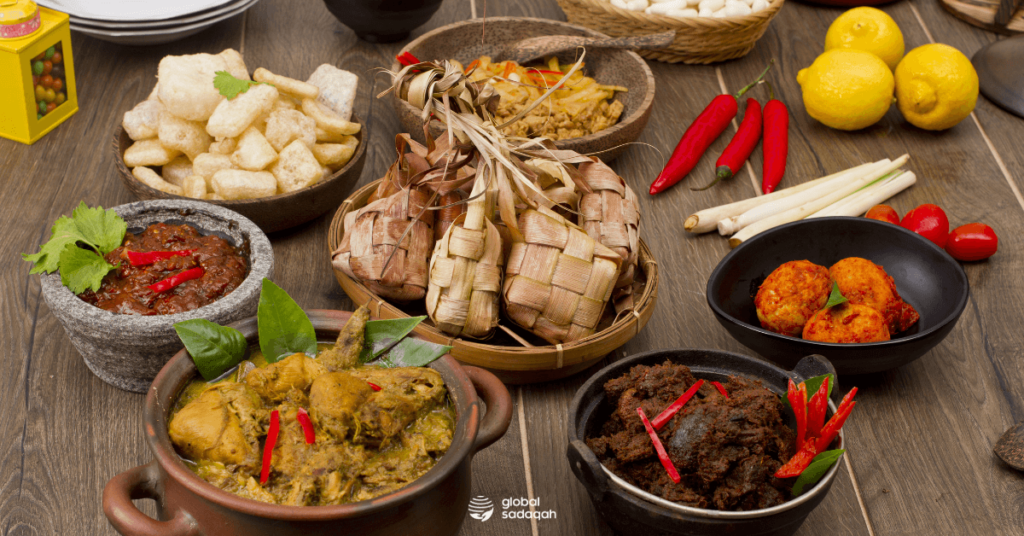
Must-eat Eid food in Malaysia includes ketupat, lemang and rendang.
Indonesia
Similar to Malaysia, Muslims in Indonesia would return to their hometowns, or ‘mudik’ as the locals would call it, in the days leading up to Eid. Known as Lebaran, the celebration in Indonesia, the home to the world’s largest Muslims population, is pretty much similar to that in Malaysia given the cultural heritage that the two neighbouring countries have in common.
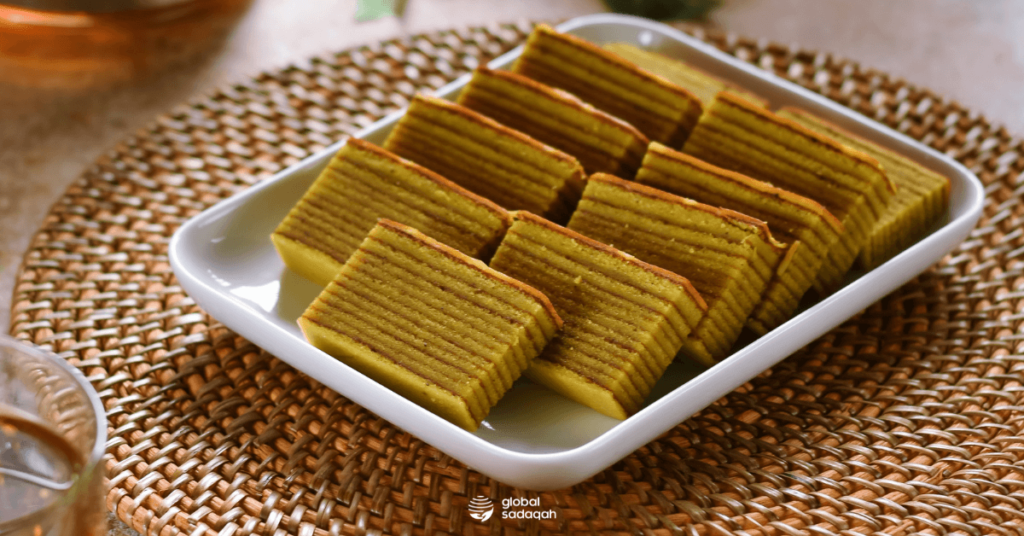
India
During Eid, one can witness the beautiful depiction of the rich Muslim culture in India, the third largest Muslim population in a country.
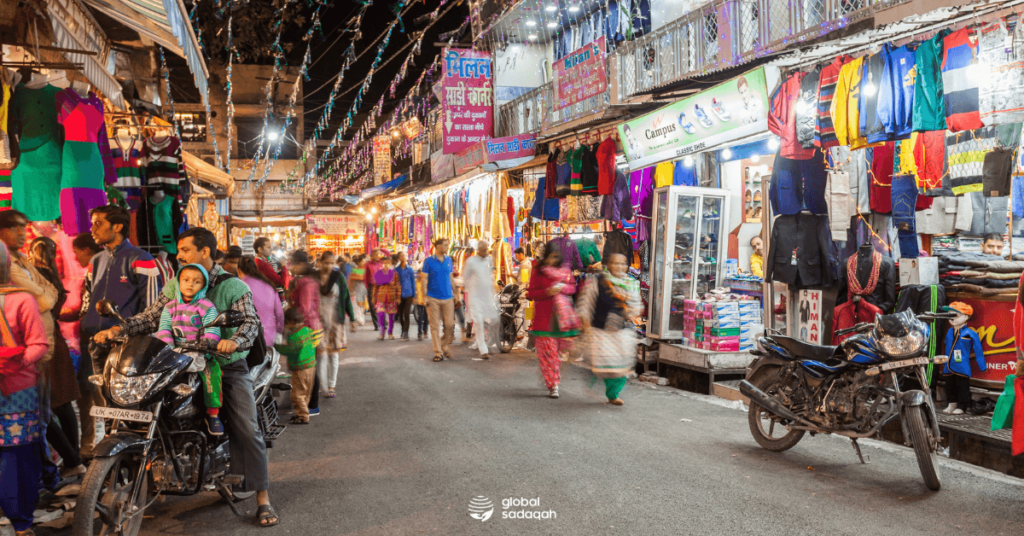
Called Choti Eid, the celebration is liveliest in three major cities with the most Muslim communities, i.e. Delhi, Mumbai and Srinagar. Muslim men would wear a kurta pajama, mojri and taqiyah for their Eid attire, and women would typically wear a salwar, lehenge choli, kameez and an ornate hijab.
Traditional delicacies served during Eid include sheer khurma (toasted sweet vermicelli noodles with milk, dates and dried fruits), saviyaan (a sweet milky pudding with dates), ras malai (a rich cheesecake) and kibbeh (a meatball made of beef or lamb).
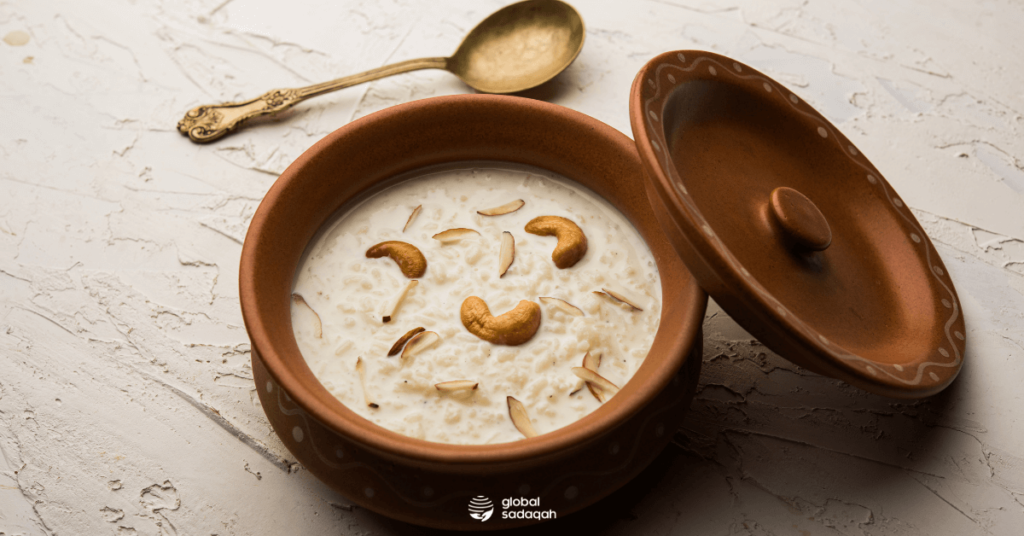
Turkey
In Turkey, Eid is known as Şeker Bayramı (Sugar Feast) because the locals serve their guests with sweets and traditional desserts such as baklava during the Eid celebration. It’s also a custom to kiss the right hand of the elderly and place it on the forehead to show respect while greeting them. This tradition is called ‘bayramlaşma’, which means ‘wishing a merry holiday’.
Kids would go around the neighbourhood, from door to door wishing people a happy ‘bayram’. As a reward, they receive candies, chocolates, or even a small amount of money.
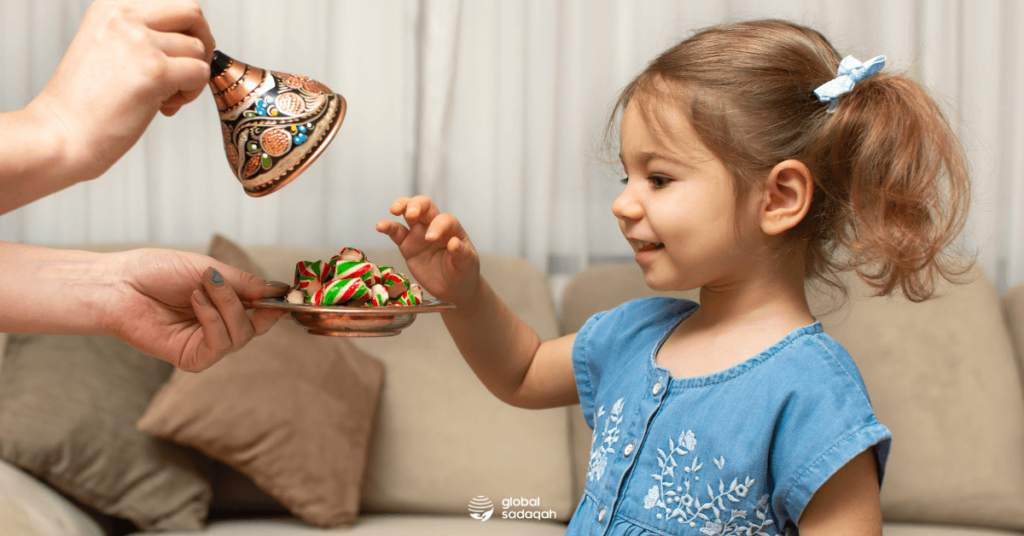
Saudi Arabia
On the morning of Eid al-Fitr, it is a common tradition for Saudis to put large rugs on the streets of their neighborhood where people can bring meals to share with each other.
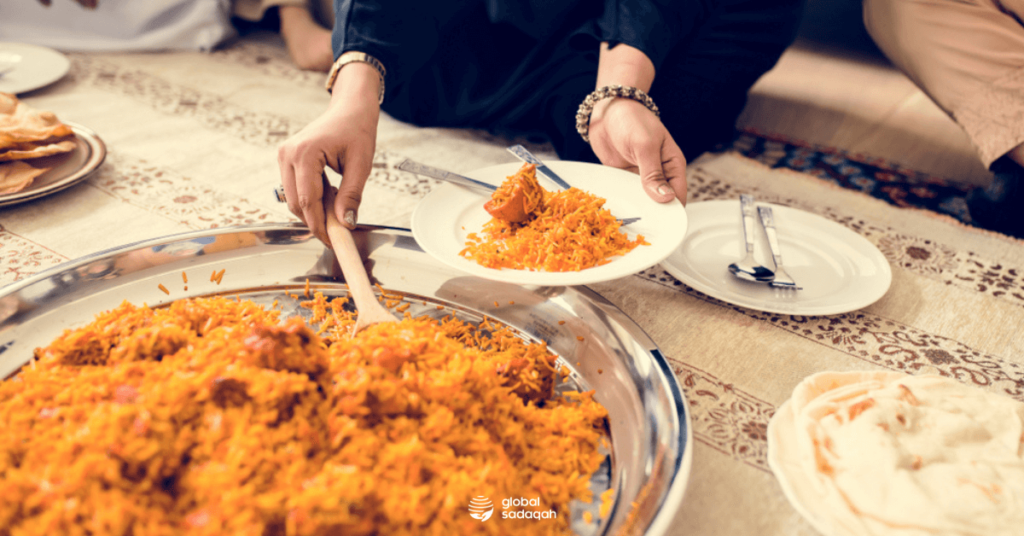
Popular traditional Eid delicacies in Saudi include mugalgal, spiced chopped lamb prepared with tomatoes, jareesh, ground wheat mixed with meat and spices, and a variety of sweet treats.
Just like other countries and cultures where kids would get Eid gifts, distributing ‘eidiya’ or money gifts to children is customary in Saudi. Some families don’t just give children gifts, but adults as well.
Despite the localised traditions, the main customs remain the same. It involves asking for forgiveness, spending time with loved ones, visiting one another, relishing delicious traditional delicacies, donning traditional attire and not to mention, kids would get something!
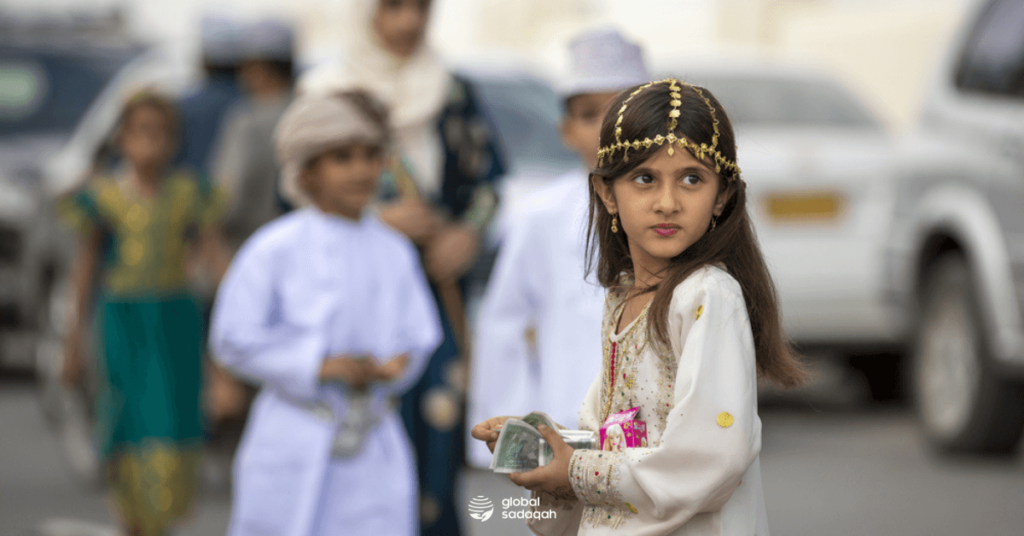
We hope you have a joyous celebration this year. Eid Mubarak to all Muslims around the world! Kullu am wa antum bikhair.
If you are looking for a trusted charity platform to donate your funds, check out GlobalSadaqah! We host an array of verified charity campaigns from around the globe by our partners.
